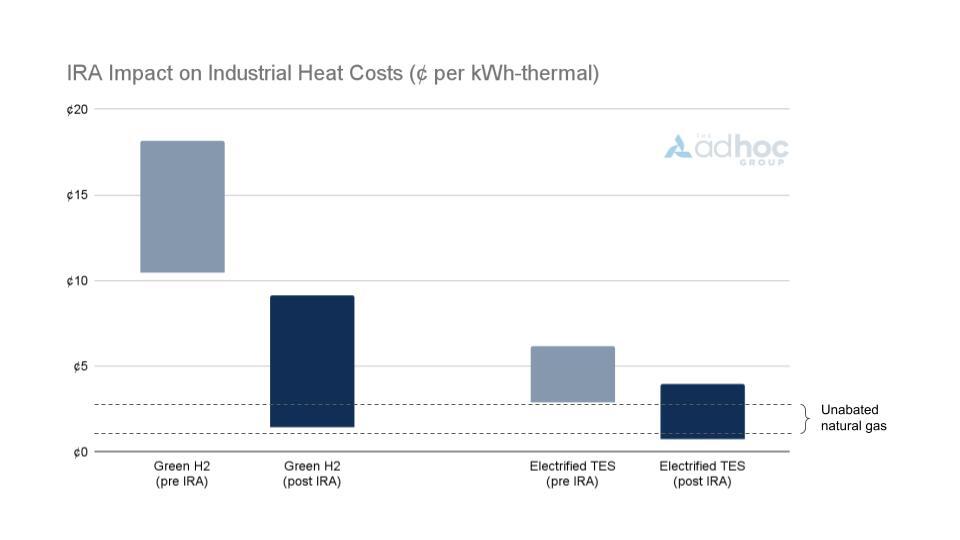The Ad Hoc Gist: Full Steam Ahead on Clean Industrial Heat?
In this month’s Gist, we cover how the Inflation Reduction Act should accelerate the decarbonization of industrial heat and create new technology winners like hydrogen and thermal storage, but warn that the IRS and wholesale energy markets could trip things up.
AHG continues to grow! We’re hiring a Senior Associate. Interested? Apply here.
We’re excited to welcome two new members to the AHG team - Elaine Reddy, our new Senior Communications Manager in Colorado and Nina Lobo, our new Associate, in Texas.
We’ve also added a new section on where to find us next month.
Enjoying the Gist? Forward to those who should subscribe.
And if there’s a topic you think we should cover, or a job you’d like us to post, fire away.
Jim
Full Steam Ahead on Clean Industrial Heat?
It takes massively high temperatures to make things like steel, chemicals, and paper. Just how hot? Like >1,000 degrees Celsius or higher, which is as hot as lava from a volcano. Thinking through how to decarbonize lava, well, that’s enough to cause me to break into a sweat.
Today, the industrial sector accounts for nearly a third of all natural gas use in the U.S. Enter the Inflation Reduction Act (IRA), the decarbonization adrenaline shot, which on top of everything else you’ve read also presents an immense opportunity to take CO2 out of industrial heat. There are at least three viable options for decarbonizing heat that the IRA should accelerate - hydrogen, electrification via thermal energy storage (TES), and carbon capture and storage (CCS).
Perhaps the biggest winner in the IRA is hydrogen; it received a truly massive tax credit that could reduce costs by 50% to 90%. Electrification also gets a boost from a suite of manufacturing tax credits, though their ultimate applicability to TES will come down to IRS guidance. The agency is now asking for comments by Nov. 4. The IRA also grows the often debated tax credit for CCS, but carbon capture is a complicated story that deserves its own Gist.
The Winners - Thermal Energy Storage and Hydrogen:
- Thermal energy storage takes cheap renewable energy and stores it in cost-effective, abundant materials that retain high temperatures until that heat is transferred as needed for industrial processes. It’s like a giant toaster powered by clean energy, but instead of warming up a pop tart, it’s used to create steam and separate chemicals. Neat, right?
- Thermal energy storage startups: Rondo Energy’s Heat Battery (an AHG client), Electrified Thermal Solutions, RedoxBlox, and Antora Energy are a few that stand out.
- Hydrogen creates no CO2 emissions when burned, but not all hydrogen is created equal. There are three primary types - Gray, Blue, and Green. Gray hydrogen is made using steam methane reformation from fossil fuels, and accounts for all of the hydrogen being used today. Blue hydrogen is just like gray, but adds carbon capture and storage. Green hydrogen is made with renewable energy and water, and is what the IRA goes the furthest to unlock.
- Hydrogen startups: Electric Hydrogen and H2Pro are developing new green hydrogen production technologies; startups like ReMo are developing processes to generate and convert green hydrogen into products like ammonia fertilizer.
The IRA is a Giant First Step, But It’s Not Enough.
While the IRA provides immense opportunity for industrial heat decarbonization, a few steps remain to get from here to net zero.
For starters, how the IRA is interpreted will influence which technologies can compete and to what extent in the market. The rules for hydrogen appear to be clear, although some uncertainties remain, like how the greenhouse gas (GHG) intensity of hydrogen production will actually be calculated. It’s also uncertain how the various manufacturing tax credits will apply to TES and hydrogen, and on what timeline.
The deployability of both TES and green hydrogen will rely on regional power markets to play nice. Both of these approaches require accessible and affordable clean power and a lack of appropriate market structures in some markets may pour cold water on these otherwise promising pathways.

Here’s What Still Needs to Happen:
- Clarify the 45X Advanced Manufacturing Production Credit for thermal energy storage. This credit provides manufacturers of energy storage modules with a $45 credit per kWh of capacity produced. In order for thermal energy or hydrogen storage systems to take advantage of this credit, however, the IRS must clarify that they qualify as a battery module, which is currently not fully defined.
- Expedite the 48C Advanced Manufacturing Energy Project Credit for industrial heat decarbonization. While not as lucrative as 45X, 48C poses another opportunity for TES. This credit provides a 30% investment tax credit on projects which, among other things, equip industrial facilities “with equipment designed to reduce greenhouse gas emissions by at least 20 percent through the installation of low- or zero-carbon process heat systems.”
Unlike 45X, however, this tax credit comes out of a limited budget, with awarding authority delegated to the Department of Energy (DOE). The Department should prioritize and expedite projects that meet the stated objective of decarbonizing process heat. - Remove punitive fees that prevent hydrogen and thermal energy storage from participating economically in some regional wholesale energy markets. Both technologies are at a disadvantage when it comes to the power prices that they can access in some regional markets, most notably California. Some markets like PJM (e.g. covering the Mid-Atlantic and part of the Midwest) already enable economic participation by only assessing transmission fees in accordance with a load’s power draw during peak usage periods.
CAISO (i.e. California’s wholesale market), however, charges a flat fee for every kWh used for transmission, unnecessarily burdening highly flexible loads which do not contribute to strain on the system. Moving away from this structure will open California’s power system to industrial heat decarbonization technology that can help the state drive towards its net-zero objectives.
If a combination of the three things above happens, net-zero magic happens and we will be well on our way to decarbonizing industrial heat.
News from Our Network
From our clients:
Pano AI announced their $20 million series A and were featured by GreenBiz as the face of climate change adaptation tech.
Singularity Energy launched Open Grid Emissions, an open source of validated hourly grid emissions; Canary Media covered it as a critical step on the journey to 24/7 clean energy.
Frontier launched a framework to help others looking to purchase low-cost, high-quality carbon removal solutions.
Great interview with ev.energy’s Joseph Vellone on how EVs are part of the solution when the lights go out.
Rondo’s heat storage systems can cut CO2 emissions by 15% in 15 years, really.
Globe and Mail named SWTCH as one of the fastest growing Canadian companies.
The New York Times features BlocPower as a building electrification solution in New York City.
From friends and colleagues:
Utility Dive dove deep into the California outages and the enabling technologies helping drive demand flexibility.
Climate Draft launched to help folks find jobs in climate tech; Charm was quoted about using it to find their head of policy.
Nick Chaset says it's time to empower Californians to be part of the state’s electricity solutions.
Montgomery Public Schools in Maryland is turning their fleet of electric buses into a money maker with Voltus and Highland Electric Fleets.
RMI interviews Sealed’s Nate Kinsey on how the DOE needs to avoid a “sugar high and crash” when incentivizing contractors to electrify.
Jobs in our network:
Send us your job openings in cleantech policy, startups, and utilities, and we'll put them in next month's Gist.
Octopus Energy is hiring an Enterprise Sales Director for North America.
ev.energy is seeking a Senior Project Manager and Senior Platform Manager.
Charm is looking for a Head of People.
SWTCH is in search of a Head of Operations.
Aeroseal needs a Head of Policy and Market Development.
Third Way is hiring a Deputy Director of their Climate & Energy Program.
NRDC is hiring an Industrial Decarbonization Advocate.
Enel is hiring a Senior Manager for the Northeast and a Senior Manager for MISO/Canada.
Antora Energy is hiring a Head of Government Affairs.
Find us:
Breakthrough Energy Summit (Seattle, WA, Oct. 17-19)
Jim Kapsis and Annie Gilleo will be attending this event so email jim@theadhocgroup.com or annie@theadhocgroup.com to meet up.
NextGrid Alliance Summit (New York, NY, Oct. 19-20)
Anjana Agarwal will be here! Email anjana@theadhocgroup.com to meet up.
EPRI Demo Day (Minneapolis, MN, Oct. 25-26)
Brian Kooiman and Ian Rinehart will be in person. Reach out at brian@theadhocgroup.com or ian@theadhocgroup.com.
NARUC Annual Meeting and Education Conference (New Orleans LA, Nov 13-16)
Anjana Agarwal will be there! Email anjana@theadhocgroup.com to say hi.
Reasons for Hope, Reasons for Despair
Hope... Governor Newsom Signing AB 2097, which ends parking mandates freeing up more space for dense housing by transit.
Despair… Texas has shady energy dealings causing clean energy to lose out.

